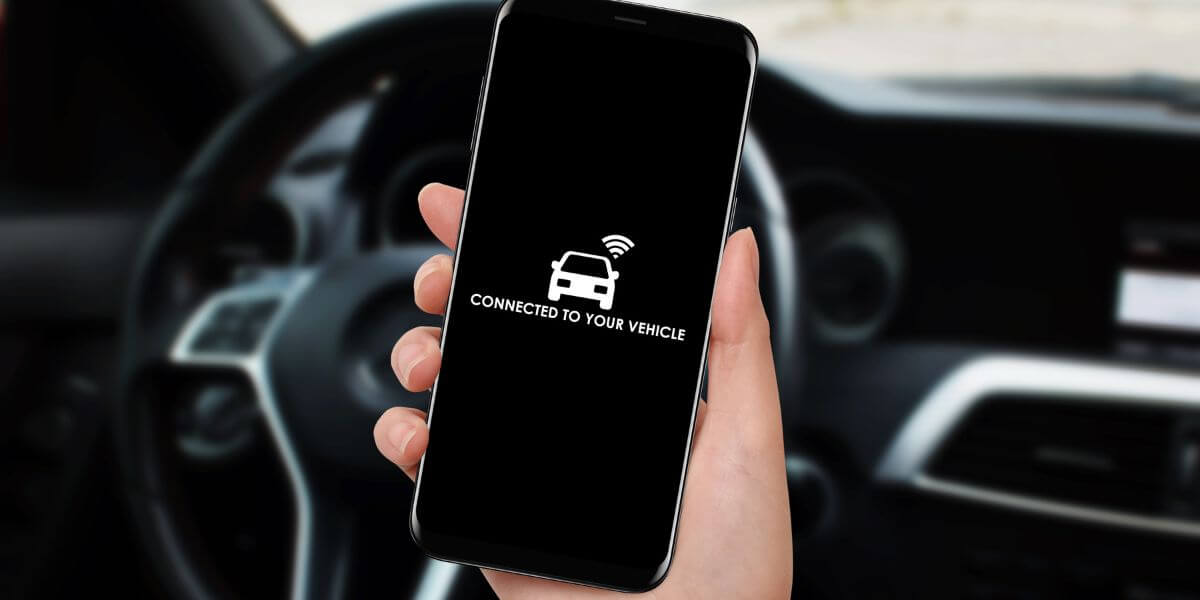Lower your internet bill
61% of people overpay for their internet.
Are you one of them?
Unlock exclusive offers in your area!
Call now
[tel]Enter zip code
1 Star is Poor & 5 Stars is Excellent.
* Required
Written by Sam Watanuki - Pub. Sep 18, 2025 / Updated Oct 23, 2025
Table of Contents
Are you happy with your Internet service?
About the author
Car wi-fi has changed the ways we stay connected during travel. What began as luxury car features in the early 2010s has now become an essential consideration for most drivers. According to recent industry data from the Federal Communications Commission, over 85% of Americans now have consistent internet access throughout their day [1], making car internet solutions more appealing than ever for road trips, daily commutes, and emergency situations.
Whether you’re planning a cross-country adventure or simply need reliable connectivity for work calls during your commute, having wi-fi in your car opens up possibilities for navigation updates, streaming entertainment, emergency communications, and productivity on the go. The challenge lies in choosing the right solution that balances cost, reliability, and data needs. Here are five proven methods to get internet access in your vehicle, ranging from budget-friendly options to premium solutions that rival home internet speeds.
61% of people overpay for their internet.
Are you one of them?
Unlock exclusive offers in your area!
Call now
[tel]Enter zip code

How Much Does Car Internet Cost?
Car internet pricing varies significantly based on your chosen method and data requirements. Phone hotspot plans typically add $10-40 monthly to existing cellular plans, while dedicated mobile hotspot devices range from $20-90 per month depending on data allowances. Built-in car systems usually cost around $20 monthly [2], and portable internet services like Starlink can reach $40 monthly [3], but offer the most reliable coverage in remote areas.
When comparing internet providers for car connectivity, consider both the monthly service cost and any required equipment fees. Many carriers offer promotional pricing for the first year, so factor in long-term costs when making decisions.
Getting Wi-Fi in your car can enhance your travel experience by keeping you connected on the go. Here are some ways to do just that:
Your smartphone’s built-in hotspot feature represents the most accessible entry point for car wi-fi. This method leverages your existing cellular data plan, typically adding 15-50GB of hotspot data monthly depending on your carrier and plan tier.
Smartphones can support 5-7 connected devices simultaneously [4], making this solution practical for small families. The setup process involves activating hotspot functionality through your phone’s settings and sharing the network password with other devices.
However, phone hotspots have limitations. Heavy usage drains your phone’s battery quickly, potentially leaving you without communication during emergencies. Data speeds may also slow after reaching your plan’s high-speed threshold, and streaming video can rapidly consume monthly allowances.
Best for: Solo travelers, occasional use, and those already paying for unlimited cellular plans with hotspot data included.
Dedicated mobile hotspot devices offer superior performance compared to phone hotspots, with longer battery life, stronger signal reception, and the ability to connect 10-20 devices simultaneously [5]. These pocket-sized devices operate on cellular networks but don’t impact your phone’s battery or performance.
Current market leaders include the Verizon Jetpack series, AT&T’s MiFi devices, and T-Mobile’s Inseego models. Pricing typically ranges from $100-300 for the device, plus monthly service fees starting around $20 for basic data packages.
The advantage lies in dedicated performance – these devices are engineered specifically for internet sharing, often providing faster speeds and more stable connections than phone hotspots. Many models also feature external antenna connections for improved signal in weak coverage areas.
Best for: Families with multiple devices, frequent travelers, and those requiring consistent performance without draining phone batteries.

Staying Connected in Your Car
Many vehicles manufactured after 2018 include integrated internet capabilities through partnerships with major cellular carriers. Systems like GM’s OnStar, Ford’s SYNC Connect, and Toyota’s Safety Connect offer internet access through your vehicle’s infotainment system.
These built-in solutions provide several advantages: professional installation, integrated billing, and often include additional features like remote vehicle monitoring, emergency services, and over-the-air software updates. The antenna systems are typically more powerful than portable devices, potentially offering better signal reception.
Pricing varies by manufacturer and carrier partnership, generally ranging from $20-50 monthly. Some automakers include trial periods with new vehicle purchases, allowing you to test the service before committing to ongoing payments.
Best for: New car buyers, those wanting integrated solutions, and drivers who prioritize professional installation and support.
Public wi-fi networks offer free internet access at restaurants, gas stations, hotels, and many retail locations. While not suitable as a primary solution, strategic planning around public hotspots can significantly reduce data consumption from paid services.
Many major chains now offer reliable public wi-fi, including McDonald’s, Starbucks, Walmart, and most hotel brands. Apps like WiFi Map help locate nearby hotspots [6], while VPN services provide security protection when using public networks.
The key limitation involves security risks and reliability. Public networks may have bandwidth restrictions, time limits, or require purchases to access. Additionally, sensitive activities like banking should be avoided on public networks despite VPN protection.
Best for: Budget-conscious travelers, supplementing paid services, and planned stops at businesses with reliable public wi-fi.
Enhancing existing cellular signals can dramatically improve car internet performance without changing service providers. Cellular signal boosters, external antennas, and strategic device positioning can increase data speeds and expand coverage areas.
Professional-grade signal boosters can improve cellular reception, particularly beneficial in rural areas or vehicles with poor antenna placement. These devices typically cost $200-500 but work with any cellular-based internet solution.
Consider your vehicle’s construction when planning internet solutions. Metal roofing, tinted windows, and electronic interference can significantly impact cellular signal strength. Sometimes, simple solutions like external antenna mounts or device repositioning provide substantial improvements.
Best for: Users experiencing poor cellular reception, those in rural areas, and anyone wanting to maximize existing service performance.

What Should You Consider When Comparing Internet Plans?
When evaluating car internet options, prioritize data allowances over advertised speeds. Most car internet activities — navigation, music streaming, and basic web browsing — require modest bandwidth but can consume significant data over time. Video streaming can be the largest data consumption risk, with HD video using approximately 3GB per hour [7].
Consider your typical travel patterns when comparing internet providers. City drivers with predictable routes may find phone hotspots sufficient, while rural travelers benefit from satellite-based portable internet services. Business travelers often prefer built-in automotive systems for their integration and reliability.
Internet prices vary significantly based on promotional periods and contract terms. Many carriers offer introductory pricing that increases after 12-24 months, so calculate long-term costs when making decisions. Additionally, consider equipment costs, activation fees, and early termination charges when comparing total ownership costs.
Geographic coverage represents another big factor. The best internet providers in city areas may offer poor rural coverage, while satellite services maintain consistent performance regardless of location. Be sure to review coverage maps and read user reviews specific to your intended travel areas before committing to any service.
Data requirements depend heavily on usage patterns. Basic navigation and music streaming require 1-2GB monthly, while video streaming can consume 30+ GB for regular use. Most car internet users find 15-25GB monthly sufficient for moderate usage including navigation, streaming audio, and occasional video content.
Many major internet providers offer mobile solutions that complement home service. Cable companies like Xfinity, Spectrum, and Cox provide cellular-based mobile internet that can bundle with home service for cost savings. Contact your current provider to explore mobile options and potential bundle discounts.
Satellite-based portable internet services like Starlink offer the most consistent coverage regardless of location, but at premium pricing. For most users, major cellular carriers (Verizon, AT&T, T-Mobile) provide adequate coverage in populated areas. Rural travelers benefit most from satellite solutions or carrier-specific coverage analysis.
Built-in automotive systems and dedicated mobile hotspots generally provide better security than public wi-fi, but may not meet enterprise security requirements. Business users should implement VPN connections regardless of internet method and avoid accessing sensitive data on any mobile connection. Consider your company’s specific security policies before conducting business activities over car internet connections.
[1] FCC. “Federal Communications Commission FCC 20-112."
[2] AllConnect. “Car Wi-Fi: How to get connected in your vehicle."
[3] OnStar. “OnStar plans and pricing."
[4] Reddit. “How many bluetooth devices can connected at once?"
[5] Optimum. “What Is a WiFi Hotspot & How Does It Work?"
[7] Panda Security. “How Much Data Does Streaming Use? + 5 Tips to Manage Data."
About the author
Congratulations, you qualify for deals on internet plans.
Speak with our specialists to access all local discounts and limited time offers in your area.
[tel]61% of people overpay for their internet.
Are you one of them?
Unlock exclusive offers in your area!
Call now
[tel]Enter zip code